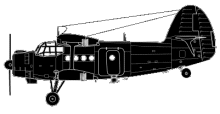Incident Overview

Description
Sibir Airlines Flight 1047, a Tupolev Tu-154, departed Moscow about 22:40 on a domestic passenger flight to Sochi, Russia. At an altitude of 12100 m an explosion occurred inside cabin on the right hand side on seat row 25. An explosive decompression followed and the aircraft entered a descent. It subsequently broke up and crashed, killing all 46 on board. The aircraft crashed almost simultaneously with a Volga-Aviaexpress Tupolev Tu-134 which had also departed Moscow’s Domodedovo Airport earlier that night. Investigations revealed traces of Hexogen, a highly sophisticated explosive also known as RDX in the wreckage. It appeared that the explosives had been carried aboard by a female passenger. Two female suicide bombers arrived at Moscow at 19:45 on the same day on a flight from Makhachkala in the company of another two Chechens. They were taken aside on arrival and were handed to a police captain in charge of antiterrorist precautions, but they were released without apparently having been searched. Both women then bought tickets on the Sibir flight to Sochi and the Volga-Aviaexpress to Volgograd from a black-market peddler. After bribing a Sibir Airlines employee in charge of check-in and boarding one of the women was able to bypass security and get on board the Tupolev Tu-154. The cause of the crashes of Tu-154 RA 85556 and Tu-134 RA 65080 aircrafts on August 24, 2004 was the destruction of aircraft construction in flight as a result of the impact of explosive charges.
Source of Information
https://www.mintrans.ru/press-center/news/3657https://www.mintrans.ru/press-center/news/3657Primary Cause
The presence of Hexogen, a highly sophisticated explosive, carried aboard by a female passenger, is suspected to be the primary cause.The presence of Hexogen, a highly sophisticated explosive, carried aboard by a female passenger, is suspected to be the primary cause.Share on:



